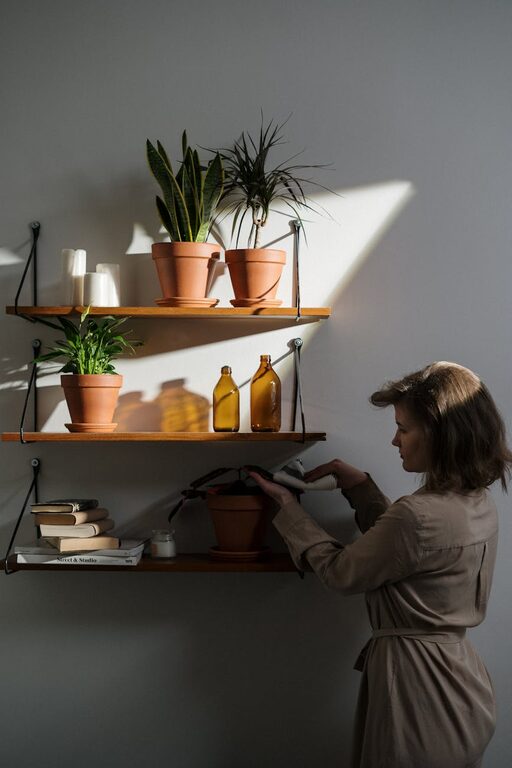Essential Tips for Keeping Your Houseplants Healthy and Thriving

Bringing houseplants into your home can brighten up any space and improve air quality. However, keeping these green companions healthy requires some basic care and attention. Whether you’re a novice plant parent or have a collection of thriving greens, these tips will help ensure your houseplants stay vibrant and lush.
Understanding Your Plant’s Needs
Every plant species has specific requirements for light, water, and soil. Before bringing a new plant home, take some time to research its natural habitat and care needs.
Light Requirements
Light is one of the most crucial factors for plant health. While some houseplants thrive in bright, direct sunlight, others prefer low or indirect light.
– Bright Light Plants: Succulents, cacti, and fiddle leaf figs usually do well near windows with plenty of sunlight.
– Medium/Indirect Light Plants: Popular choices like pothos, peace lilies, and snake plants prefer filtered light.
– Low Light Plants: Plants such as ZZ plants and some ferns can tolerate spaces with less natural light.
Placing plants in an appropriate spot prevents leaf burn, stunted growth, or drooping.
Watering Wisely
Overwatering is a common mistake that can harm your plants more than underwatering. Each plant has different water needs, so learning the right balance is key.
– Check the soil moisture by inserting your finger about an inch deep. If it feels dry, it’s time to water.
– Use room temperature water and water thoroughly until it drains out of the pot’s bottom.
– Avoid leaving plants sitting in water, as this can lead to root rot.
– Consider using pots with drainage holes to prevent water buildup.
Soil and Potting
The right soil mix supports healthy growth by providing nutrients and drainage. Many houseplants prefer well-draining soil to avoid water retention.
– Use a soil mix suited to your plant type; for example, cacti need sandy soil, while tropical plants benefit from peat-based mixes.
– Repot plants every 1-2 years or when roots outgrow the current pot.
– Ensure your pots have drainage holes to allow excess water to escape.
Maintaining Optimal Conditions
Houseplants thrive when their surrounding environment mimics their natural habitat as closely as possible.
Humidity Levels
Many tropical plants enjoy higher humidity levels. Dry indoor air, especially during winter, can cause browning leaf tips or leaf drop.
– Increase humidity by grouping plants together.
– Use a humidifier or place a shallow tray filled with water and pebbles beneath your plants.
– Misting leaves occasionally can also help, but avoid excess moisture on foliage.
Temperature
Most houseplants prefer temperatures between 65°F and 75°F (18°C to 24°C). Keep plants away from drafts, air conditioners, and heating vents to avoid stress.
Regular Plant Care Practices
Routine attention goes a long way in maintaining plant health.
Cleaning Leaves
Dust accumulation on leaves can block sunlight and reduce photosynthesis.
– Gently wipe leaves with a damp cloth every few weeks.
– For plants with fine hairs, use a soft brush.
– Avoid using leaf shine products, as they can clog leaf pores.
Pruning and Trimming
Prune dead or yellowing leaves to encourage new growth and keep plants looking neat.
– Use clean, sharp scissors or pruning shears.
– Pinch back leggy growth to promote bushiness.
– Remove flowers once they have faded to redirect energy into healthier parts.
Fertilizing
Houseplants benefit from fertilizing during their active growing season (spring and summer).
– Use a balanced, water-soluble fertilizer diluted to half-strength.
– Fertilize about once a month.
– Avoid fertilizing in winter when many plants rest.
Dealing with Common Problems
Even with the best care, plants can face occasional challenges.
Pests
Watch for pests like spider mites, aphids, and mealybugs, which can harm plants.
– Inspect plants regularly, especially the undersides of leaves.
– Remove pests by wiping with a damp cloth or spraying with a mild insecticidal soap.
– Isolate affected plants to prevent spreading.
Disease
Fungal and bacterial diseases may cause spots, mold, or wilting.
– Remove affected leaves promptly.
– Improve air circulation around plants.
– Avoid overhead watering to keep foliage dry.
Tips for Successful Houseplant Growth
– Rotate plants occasionally so all sides receive light evenly.
– Use plant stands or shelves if space is limited.
– Keep a plant care journal to track watering, feeding, and growth.
– Don’t rush propagation; wait until your plant is healthy and established.
Conclusion
Keeping houseplants healthy doesn’t have to be complicated. By understanding their unique needs and establishing a consistent care routine, you can enjoy the beauty and benefits of thriving indoor plants. Remember, patience and observation are key – your plants will reward your efforts with lush green leaves and a lively atmosphere in your home. Happy planting!




